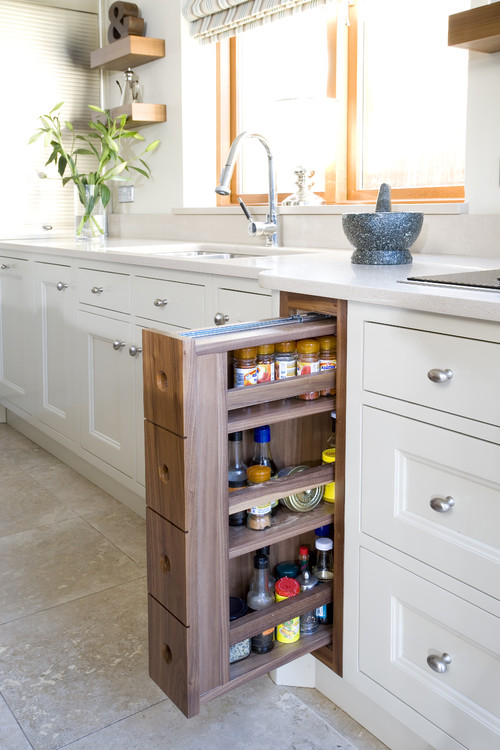So often, when it comes to buying rugs, we head to the store, flip through the racks, and stop when we find a color or pattern we like in a rug that’s the right size.
Ginger Kachline, Master Rug Cleaner and owner of Interior Care, Inc., says, “That’s one way of doing it, but buying a rug is an investment in your home. You want to make sure you’re getting the right one for your living space. Ideally, you want to start with the rug and decorate around it, like an artist with a clean canvas.” But that’s not always possible. When it comes to choosing the right rug for your space, she suggests you look at much more than the size and color.
First, think about where the rug will go:
Will there be heavy foot traffic, or is there a possibility of spills and stains?
Do you have pets that could have accidents on the rug?
Will it sit on hardwood floor, tile, or something else?
Will you set heavy furniture on it that could leave lasting marks in the fibers?
Or is there a someone in the family who is disabled or aging and could be at risk of tripping over a thick rug?
Understanding what you need out of a rug will help you pick one with the right fiber content, construction and comfort for your room.
Fiber Content
There are many kinds of fibers used in rugs. Natural fibers include wool, silk, cotton, plant and grass fibers, and even leather! Synthetics include polyester, nylon, polypropylene/olefin, rayon/viscose, and many fiber combinations.
“There’s a lot of inferior fiber out there that does not perform well,” Ginger says. “We’re the ones who see it after people have had the rug a while. They want it to look like new again, and it just won’t.”
She suggests first looking at rugs made of natural fibers, like wool, silk, or cotton. These tend to be long-lasting and comfortable.
Wool
According to Ginger, it’s the best out there and has been so for hundreds of years. Think of Persian rugs that have lasted centuries! Wool is durable, totally natural, and comfortable because of its dense fibers. Additionally, wool is resilient and has good memory. That means the fibers will bounce back, even after a heavy chair or table has sat in one place for a long time. Some treatments can ruin a wool rug, though, so you do need to be careful about how you care for it. Also, keep in mind that wool is absorbent, so it can soak up whatever you spill on it, if you don’t immediately blot up the liquid. Wool is also more expensive than other fibers.
Sisal and jute
Rugs made of these fibers can be very attractive and can be woven into patterns and textures you can’t get from other fibers. Sisal and wool are natural plant fibers that are coarse and can feel rough underfoot. They’re resilient and can last a long time, but they’re also absorbent, so stains and watermarks are hard to remove. They can also be difficult to vacuum, as soil buries itself down in the weave. These types of rugs would be well suited for high traffic areas where spills would be minimal.
Silk and viscose
Silk rugs, made from silkworms, are beautiful, easy to dye and very soft. They feel luxurious and should be treated as such, because they’re not very durable! True silk is very expensive, so you would not want to have it in a high traffic area. And buyer beware: many times, buyers are told a rug is real silk, when it is really a synthetic. It’s sometimes hard to tell the difference between real and fake silk, which has names like viscose, rayon, faux silk and art silk. As Ginger says about these fake silks, “the day you buy a viscose rug is the best it will ever look.” If you redecorate often, however, this affordable fiber can be a good option, as its lower price point may be its best feature.
Learn more about the pros and cons of different rug fibers.
When it comes to rugs made of synthetic fibers, Ginger recommends nylon.
Nylon
“Carpet manufacturers come out with new fibers all the time,” she says, “but they keep coming back to nylon.” Nylon comes in a limitless selection of colors and styles, it’s tough and durable, yet it has a silky sheen that people find attractive.
Olefin/Polypropylene
These synthetic fibers are derived from plastic, so they can stand up to high traffic and are good at repelling stains. This can be a good fiber to use outdoors or in a playroom. It is oleophilic, which means it loves oils, so it will “dull out” in a high traffic area. Olefin/polypropylene also has a low burn rate, which matters if you’re going to drag a heavy piece of furniture over it or place the rug in front of a fireplace. The friction or heat from a spark can cause the rug to scorch. This fiber does not have the memory of wool, so spots where furniture has left dents won’t spring back.
Choosing a rug with Ginger’s dog, Bitsy
Construction
Now that you’ve decided what types of fibers fit the bill for your needs, it’s time to look at the construction of the rug. In general, natural fiber rugs are handmade, rather than mass-produced. Synthetic rugs, on the other hand, are made by machines and can be customized in a huge array of colors, patterns and sizes.
There are many ways of constructing a rug . . . hand-knotted, flat-weave woven, tufted, hooked, braided, needlepoint, just to name a few. When choosing a rug, look at the back of it. Ginger says that’s the roadmap that tells you everything about the rug’s construction, including determining how certain rugs were made. Ideally, you want to see and feel the same fibers on the back of the rug as on the front. That usually means the fibers are woven and knotted so tightly they don’t need any backing to hold the rug together. There are also many wool machine-made rugs that are excellent, last a long time and perform well.
She continues, “Usually, if you see fabric on the back , it’s a tufted rug. That backing can give a rug stability, but it also traps stains and makes the rug harder to clean.” In addition, the glue on the backing can have an offensive odor. Over time, that glue will turn to dust, and the backing will delaminate. “If you have kids or pets and expect stains, you don’t want to see backing on a rug,” she notes.
Hand-knotted rugs have been around forever and hold up well. However, many recent productions are bleached and sheared so low to give the look of an old rug, that they many not last as long. There can even be issues with older Persian rugs that have been repaired or may not have colorfast dyes. Flat weave rugs, which include woven and braided rugs, are nice, because you can usually turn them over and use both sides. These include kilims and dhurries.
Related: How to Choose Tile for Your Home
Now it’s time to choose the right rug for your space! After researching rug fibers and construction, you’ll know what to look for at the store, and you’ll be able to find a quality rug that suits your needs.
Color and size
Of course, you want your rug to match your décor and fit your space. Ideally, you’ll select the rug first, as mentioned above. “I think the rug should be the centerpiece of any room,” Ginger said. Now, though, when you beeline to the rack of rugs in the right size, you’ll know what to look for when you spot colors and patterns you like.
Protect your investment
After you buy, consider treating your rug with a stain protectant, especially if it’s made of natural fibers. That’s an easy way to prevent stains and make your investment last even longer. Also consider having a custom rug pad made, especially if you have hardwood floors. The rug pad will prevent the rug from slipping, will give more cushion and will protect your floors. Both of these are available at Interior Care, which also carries a new moisture barrier pad that protects your floors from pet stains and other spills.
Lastly, Ginger advises that you understand what you’re buying. You can contact her or another rug expert before you purchase anything, like taking a car to a mechanic before you buy it. Ginger can tell you if she’s seeing problems with a particular brand or fiber.
Whichever rug you choose, make sure it’s one you can enjoy! If you want to change your décor often, or you have kids or pets, you might not want to spend the money for a Persian rug. “Dogs are the best appraisers, “ Ginger jokes. “They always pee on the best rug in the house!”. Nearly 80% of the rugs Interior Care receives for cleaning are the victims of pet accidents, and the stains are often permanent.
However, as Ginger’s mother used to say, “You can never go wrong with an oriental rug. They go with anything!”.
Interior Care, Inc. was established in 1988 to provide quality cleaning services for fine furnishings and fabrics in the Chattanooga, TN area. Ginger, our business owner and founder, has over 30 years of experience in the cleaning industry. We are certified by IICRC, The Clean Trust, Wool Safe and Master Rug Cleaner using only manufacturer-recommended products and procedures.











































































